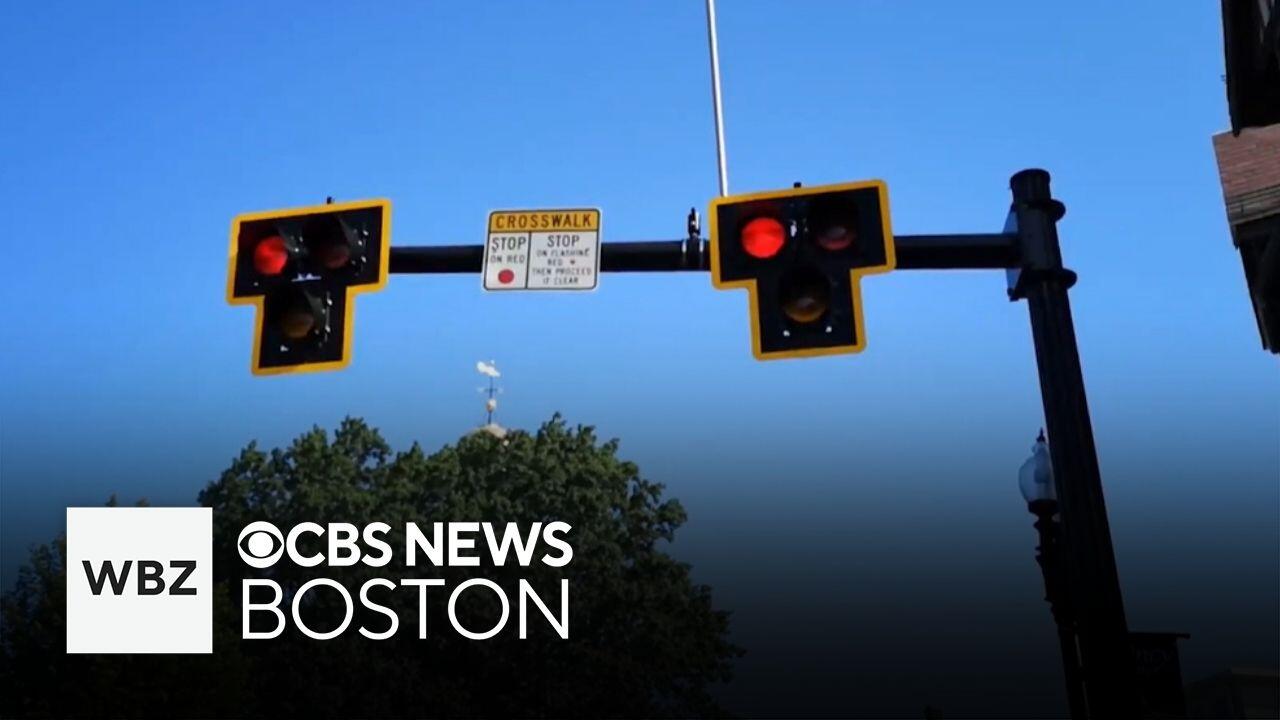New kind of traffic signal is confusing Massachusetts drivers as 25% run red light, study finds
A new type of traffic light that's becoming increasingly popular in Massachusetts is confusing drivers, with nearly a quarter of cars running through a solid red light, a study found.
Researchers at UMass Amherst have been studying pedestrian hybrid beacons, a type of crosswalk device that have five different sets of instructions for drivers. Unlike regular traffic signals, these beacons are found at mid-block crosswalks and places where walking/biking trails cross through streets, and they don't have a green light.
First introduced in 2015, there are now 40 of these lights installed across the state, and the UMass study says more are in the planning stage. But researchers say "confusion is a real safety issue" for drivers encountering the beacons.
How does a pedestrian hybrid beacon work?
When a pedestrian first pushes a button to activate the beacon, that causes the yellow light to flash, telling drivers to slow down. It will then turn solid yellow, which means cars should "prepare to stop."
Two solid red lights mean drivers must stop while pedestrians cross. The lights will then flash red, indicating that drivers can go forward if the crosswalk is clear. When the lights are dark, it means cars can proceed with caution until the beacon is activated by another pedestrian.
Safety issues
The researchers said that at 10 sites in Massachusetts, nearly a quarter of drivers studied drove right through the solid red lights, and 65% went through the flashing red lights regardless of whether pedestrians were crossing.
Many of the drivers going through flashing red lights are waiting in a line of cars and "roll through" even though pedestrians want to cross.
"That's especially problematic for rail trail or shared-use path locations, because there are going to be cyclists, runners or people traveling at faster speeds trying to catch that flashing red interval to cross the street before the walk signal ends," lead study author Angelina Caggiano said in a statement. "Whereas cars are now rolling through, and they may not see those secondary pedestrians."
On the other hand, researchers found that some drivers are stopping unnecessarily at the beacons. About 9% stopped when the lights were dark and 19% stopped for flashing yellow lights. Other drivers who see a red light but no pedestrians at the crosswalk may then get confused, the researchers believe.
"This may contribute to unsafe instances of cars driving through the solid or flashing red lights if drivers incorrectly assume that no pedestrians are present," the study said.
The study authors say it's worth questioning whether the beacons are the best devices to use at rail trail crossings and other areas where there's a steady stream of pedestrians and cyclists.
